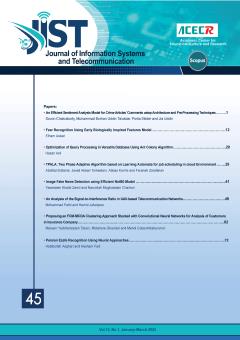SDN makes the network programmable, agile, and flexible with data and control traffic separating. This architecture consists of three layers which are application, control and data. The aim of our research is concentrated on the control layer to improve the performance
More
SDN makes the network programmable, agile, and flexible with data and control traffic separating. This architecture consists of three layers which are application, control and data. The aim of our research is concentrated on the control layer to improve the performance of the network in an autonomic manner. In the first step, we have categorized the performance improvement researches based on network performance improvement solutions proposed in the recent papers. This performance improvement solution clustering is one of our contributions to our paper. The significant contribution in this paper is a novel autonomic SDN-based architecture to ameliorate the performance metrics including blocking probability (BP), delay, jitter, packet loss rate (PLR), and path utilization. Our SDN-based autonomic system consists of three layers (data, autonomic control, and Route learning) to separate the traffics based on deep neural networks (DNN) and to route the flows with the greedy algorithm. The autonomic SDN-based architecture which has proposed in this paper makes better network performance metrics dynamically. Our proposed autonomic architecture will be developed in the POX controller which has developed by python. Mininet is used for simulation and the results are compared with the commonly used SDN named pure SDN in this article. The simulation results show that our structure works better in a full-mesh topology and improves the performance metrics simultaneously. The average performance is improved by about %2.5 in comparison with pure SDN architecture based on the Area Under Curve (AUC) of network performance.
Manuscript profile


